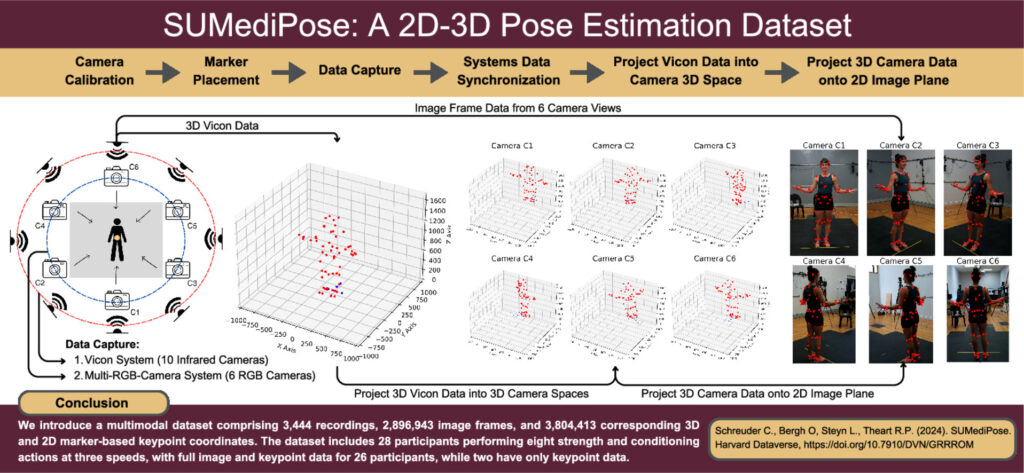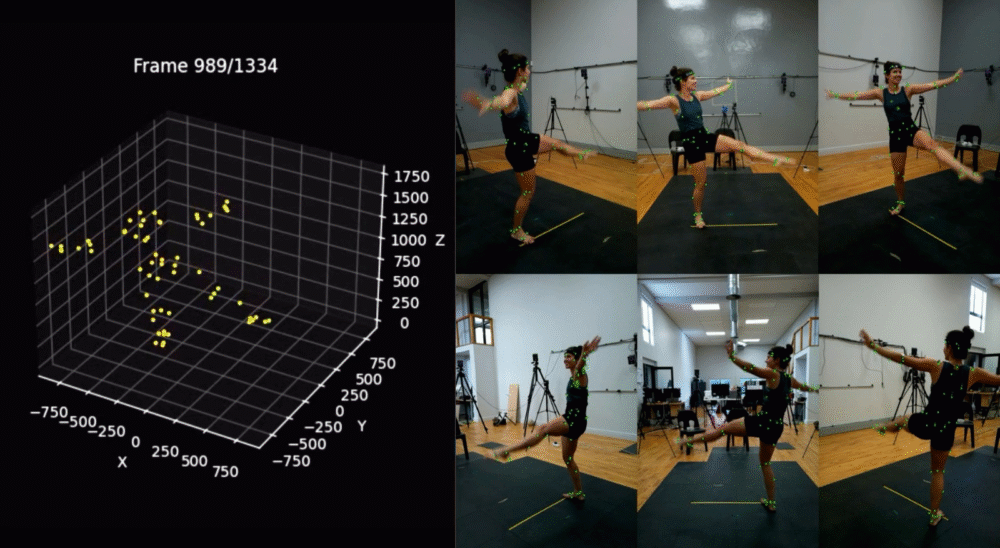Biomechanical research has long faced a significant challenge: obtaining precise human movement data. Highly accurate marker-based motion capture systems are expensive and not widely accessible. At the same time, more flexible markerless systems, which rely on computer vision, have been limited by a lack of anatomically precise data for training and validation.
To address this gap, Professor Rensu Theart, PhD candidate Chris-Mari Schreuder, and MEng graduate Lizé Steyn from the Department of Electrical and Electronic Engineering, along with Oloff Bergh, managing analyst of the Neuromechanics Unit, have developed a new multimodal dataset designed to support your work in advanced human pose estimation. This project provides a comprehensive and accurate resource for the medical and sports science communities.

Fig 1: A Graphical Abstract Visualising a 2D-3D Pose Estimation Dataset
Developing the SUMediPose Dataset
The research team created the SUMediPose dataset, a collection of recordings from 28 participants (data from 26 is fully available) performing eight standard strength and conditioning actions, such as squats, deadlifts, and lunges. Each exercise was performed at three different speeds to capture a wide range of movement dynamics.
To ensure the highest level of accuracy, the team used a dual-capture method. The Vicon system, a state-of-the-art marker-based technology, recorded precise 3D marker coordinates. A professional placed an extensive set of markers on each participant to industry standards, guaranteeing anatomical correctness.
Simultaneously, a custom-built system of six cameras recorded the movements from a full 360° perspective. The team then synchronised the data, projecting the precise 3D marker data onto the 2D video frames.

Fig 2. An anatomical diagram of the placements of markers on subjects.
Dataset Composition and Value
The resulting SUMediPose dataset is a comprehensive resource for training and validating pose estimation models. It contains 3,444 recordings, comprising 2,896,943 image frames and 3,804,413 corresponding 3D and 2D marker-based keypoint coordinates.
The dataset offers distinct advantages for researchers:
- High-Fidelity Ground Truth: The use of a professionally operated marker-based system ensures the anatomical precision of the 3D and projected 2D annotations.
- Multimodal Utility: The direct correlation between image, 2D, and 3D data supports the development of models for both 2D and 3D pose estimation tasks.
- Flexibility for Research: All intrinsic and extrinsic camera calibration parameters are included. This allows researchers to perform their own 3D and 2D projections and adjust the raw 3D data to meet specific application needs.
Conclusion
By providing a robust and anatomically precise dataset, SUMediPose equips researchers with a superior tool for building the next generation of markerless motion capture systems.
It stands to support more detailed and accurate kinematic and kinetic modelling in both medical and sports contexts.
Download and read the full research paper: https://www.sciencedirect.com/science/article/pii/S2352340925003117?via%3Dihub





